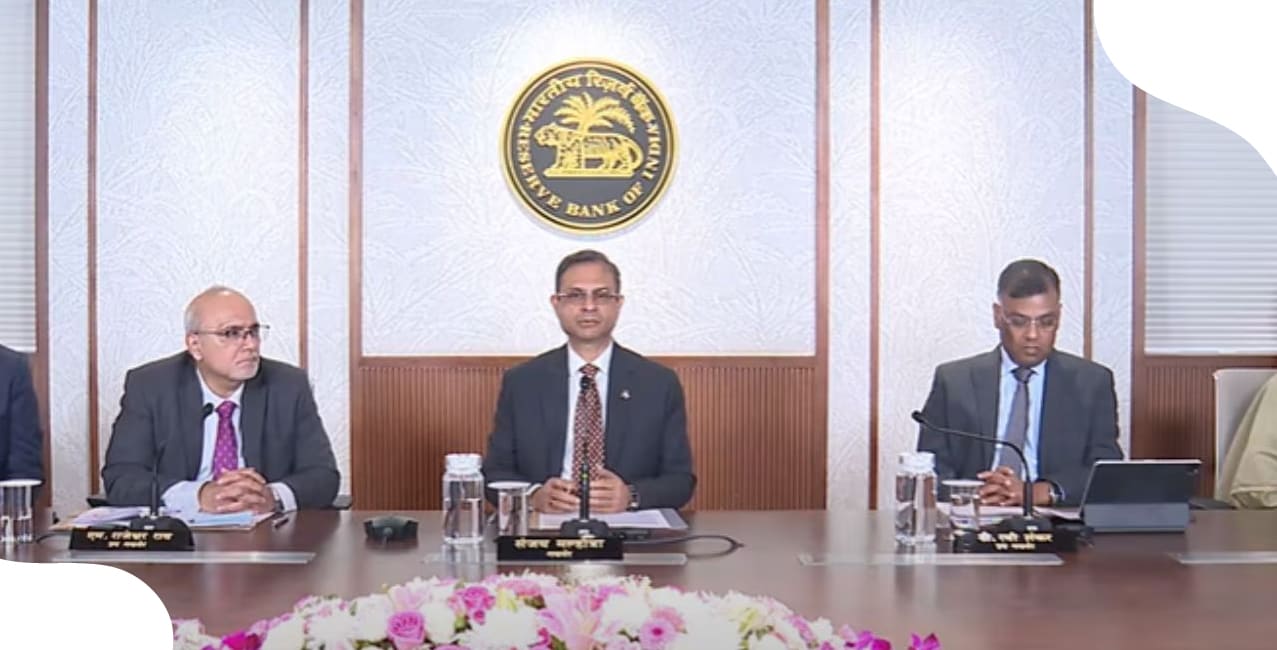
Author
LoansJagat Team
Read Time
4 Min
21 Sep 2025
RBI About to Make This New Change From October 1st, 2025: Initiative for Regulation Review
In a move aimed at increasing transparency and industry participation in regulation-setting, the Reserve Bank of India (RBI) has established a new institutional architecture for periodic review of its regulatory framework. Central to this is the formation of two linked bodies: the Regulatory Review Cell (RRC) and the Advisory Group on Regulation (AGR).
What Has RBI Announced?
- The RBI will set up a Regulatory Review Cell (RRC) under its Department of Regulation, effective from October 1, 2025, to undertake systematic reviews of all its regulations.
- The RRC’s mandate will be to ensure that regulations issued by RBI remain relevant and effective, in particular, that they are reviewed every five to seven years.
- Parallel to this, the RBI has formed an Advisory Group on Regulation (AGR) consisting of external experts, financial sector professionals and former executives, to bring in stakeholder feedback and industry expertise.
- The AGR will be chaired by Rana Ashutosh Kumar Singh, Managing Director of State Bank of India. Other members include T. T. Srinivasaraghavan (former MD of Sundaram Finance), Gautam Thakur (Chairman, Saraswat Co-operative Bank), Shyam Srinivasan (former CEO, Federal Bank), Ravi Duvvuru, and N. S. Kannan.
- The initial tenure of the AGR is for three years, with the option to extend by another two years. The AGR may co-opt additional experts as needed.
Why This Move Matters?
The establishment of the RRC and AGR marks a shift in how the RBI plans to formulate, monitor, and prune its regulatory measures. The key goals include:
- Stakeholder engagement: allowing banks, fintechs, insurance companies, consumers, and others to have better input into regulatory change.
- Regulation fitness: reviewing regulations periodically makes sure they don’t become stale, overly burdensome, or misaligned with evolving technology, market practices, or financial stability needs.
- Transparency and accountability: by making reviews systematic and scheduled, with external expert participation, regulatory processes are likely to be more predictable and comprehensible.
How It Will Work: Key Details & Timeline
Potential Challenges and Expert Reactions
While the move has been generally welcomed, there are some points to watch out for:
- Speed of implementation will be important. Setting up the RRC is one thing; conducting meaningful reviews across many existing regulations over time is another.
- Balancing interests of different stakeholders: large banks vs smaller entities; fintechs vs traditional banks; consumers vs institutions, may cause friction when deciding what to change or remove.
- Regulatory burden vs flexibility: Too much regulatory inertia is undesirable, but so is too much regulatory relaxation, financial stability, consumer protection, and systemic risk concerns must always be balanced.
Some experts believe the RBI is rightly moving toward a more consultative regulatory model. For instance, industry bodies have long asked for clearer mechanisms through which their feedback is taken before issuing or modifying rules. This framework could help reduce unintended consequences of regulations.
What It Signals for India’s Financial Sector?
- The RBI is acknowledging that the financial ecosystem (banks, fintechs, payments, NBFCs, etc.) has grown more complex and dynamic, and top-down regulation without periodic review may lag behind ground realities.
- With technology, competition, globalization, and regulatory arbitrage increasing, regulations that don’t evolve may either become irrelevant or impose overstrain.
- Investors, entrepreneurs, and smaller players may now have better recourse to highlight regulatory pain points.
Conclusion
The RBI’s formation of the Regulatory Review Cell and the Advisory Group on Regulation signifies a notable shift toward more inclusive, agile, and self-correcting regulation. By embedding periodic review and stakeholder consultation into its regulatory architecture, RBI is laying groundwork for rules that can adapt to new challenges without compromising stability. If well-executed, this move could enhance regulatory effectiveness, reduce compliance burdens, and foster more innovation in the financial sector.
Yet, success will depend on implementation: how transparently the reviews are conducted, how diverse the views in AGR are, and how recommendations are translated into action. For India’s banking, fintech, and payments ecosystems, this could be a turning point in regulatory evolution.
About the Author

LoansJagat Team
‘Simplify Finance for Everyone.’ This is the common goal of our team, as we try to explain any topic with relatable examples. From personal to business finance, managing EMIs to becoming debt-free, we do extensive research on each and every parameter, so you don’t have to. Scroll up and have a look at what 15+ years of experience in the BFSI sector looks like.

Quick Apply Loan
Subscribe Now
Related Blog Post

LoansJagat Team • 10 Jun 2025

LoansJagat Team • 06 Jun 2025

LoansJagat Team • 22 Sep 2025